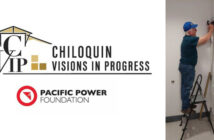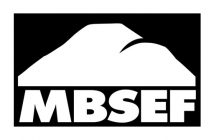As a former mayor and city councilor, I have always emphasized the importance of gathering comprehensive information from diverse perspectives before making significant policy decisions. This is particularly crucial when evaluating large-scale projects, where advocacy for a dramatic initiative can sometimes overshadow critical considerations of cost-effectiveness, broader impact, and potential unintended consequences.
The proposal for a bicycle bridge over the parkway and railroad at Hawthorne Street has rapidly gained emotional momentum, yet this enthusiasm has largely bypassed a thorough analysis of key economic and practical factors. Among these are the high costs, limited projected usage, alternative fund allocations, potential disruptions caused by the new bike route, and the broader consequences of such a significant infrastructure investment.
The genesis of this project can be traced back to 2016, when the city engaged the consulting firm CH2M to explore options for improving bicycle and pedestrian crossings between the Bend Central District and downtown. Their report indicated that a bridge crossing at Hawthorne could be achieved for $5 million. However, they also highlighted that “improvements of alternate routes such as the Greenwood Avenue undercrossing may be more effective.”
Since then, the estimated cost of the Hawthorne bridge has ballooned to between $35 million and $40 million — a staggering eightfold increase. This project has now eclipsed more cost-efficient and effective alternatives, such as the previously prioritized improvements to Greenwood and Franklin Avenues. The city council’s recent approval of this massive expenditure disregards several critical considerations.
A key objective of the 2020 transportation plan was to create “complete bike routes east and west.” Similarly, the 2020 GO Bond website emphasizes the priority to “build priority projects to improve traffic flow and east-west connections.” The proposed Hawthorne bridge, however, fails to contribute meaningfully to these goals. Franklin Avenue was identified as a vital pathway in this context.
Importantly, the Hawthorne bridge offers no tangible east-west connections. To date, no comprehensive plans have been presented to address what will happen at either end of the bridge. Extending east would require an expensive and complex crossing at Third Street, leading cyclists into an unsafe confluence of buses at the bus station. Heading west from the bridge, cyclists would encounter the dangers of downtown’s angled parking within just two blocks. It is far more likely that cyclists, in either direction, would ultimately gravitate toward Greenwood or Franklin, both of which offer direct connections to other parts of the city.
Current data on bicycle traffic at Greenwood and Franklin, both just two blocks from the proposed bridge, shows fewer than 250 daily cyclists. This suggests a very limited potential user base for a $40 million bridge. It is perhaps telling that no economic impact statement has been developed or presented for this project.
Moreover, the proposed bridge’s design, with ramps extending to Hill Street on the west and Second Street on the east, introduces additional challenges. Cyclists would need to ascend 32 feet — equivalent to climbing to the fourth floor of a building. The safety and traffic implications of cyclists merging onto steep declines at Hill Street or Second Street have not been adequately addressed. In contrast, Greenwood and Franklin allow for multiple access points, making these routes more accessible and beneficial to a broader range of users.
Property devaluation is another significant concern. The ramps at either end of the bridge will render adjacent properties on the north side of Hawthorne, between Hill Street and Second Street, virtually inaccessible and undesirable. This raises the question of whether taxpayers will be required to compensate property owners for these losses.
Maintenance costs for a bridge, especially one of this scale, far exceed those of at-grade roads. Snow removal presents a particularly complex challenge, as snow cannot be simply plowed onto the parkway or railroad tracks — it must be hauled away, if the bridge is even usable during winter months. Additionally, the bridge could become a target for vandalism or even acts of terrorism, further complicating its maintenance and security.
Perhaps the most significant unintended consequence of the proposed bridge is the closure of parkway access to downtown at Hawthorne Street. This closure will force thousands of drivers to find alternative routes, likely exacerbating congestion at several downtown intersections, with potential negative implications for the area’s overall economic vitality.
When considering an expenditure of this magnitude, it is essential to evaluate what could be achieved with comparable resources. For instance, the entire Reed Market Road rebuild, from Third Street to 27th Street, was completed for less than $20 million — half the estimated cost of the Hawthorne bridge. While the bridge would serve a minimal number of users with limited impact, Reed Market’s reconstruction has provided modern bicycle lanes and benefits approximately 20,000 drivers daily.
The $40 million allocated to this project could be far better spent on improvements to longer routes, akin to the Reed Market or the recent Wilson Avenue enhancements from Third Street to 27th Street. Many similar projects are outlined in the city’s “12 Key Routes” plan. Allocating these funds to multiple projects, including the improvements to Greenwood and Franklin, would benefit a significantly larger number of cyclists and drivers. Unfortunately, these much-needed projects will be delayed for several years if the bridge proceeds.
The facts presented here cast serious doubt on the feasibility and desirability of this $40 million investment. This bridge, one of the most expensive transportation projects in the city’s history, will serve a very narrow segment of the population while diverting funds from higher-priority projects that would serve many more. The city’s previous experience with the Juniper Ridge urban renewal project serves as a cautionary tale — an initiative that moved forward with enthusiasm, only to be canceled after significant taxpayer expense when critical facts were finally considered.
In conclusion, this proposed bridge offers limited utility, fails to provide essential east-west connections, lacks integration with the broader transportation system, and introduces numerous negative impacts that have not been adequately addressed. Far more effective and economical alternatives are available. I urge the community to reconsider whether this is the most prudent use of $40 million in addressing our transportation needs. A rational and unemotional review of this costly and non-productive project is necessary. Let’s refocus on delivering greater benefits at a fraction of the cost — let’s cancel the bridge.
The above article was prepared by the author in his/her own personal capacity. The opinions expressed in the article are the author’s own and do not necessarily reflect the views of Cascade Business News or of Cascade Publications Inc.





